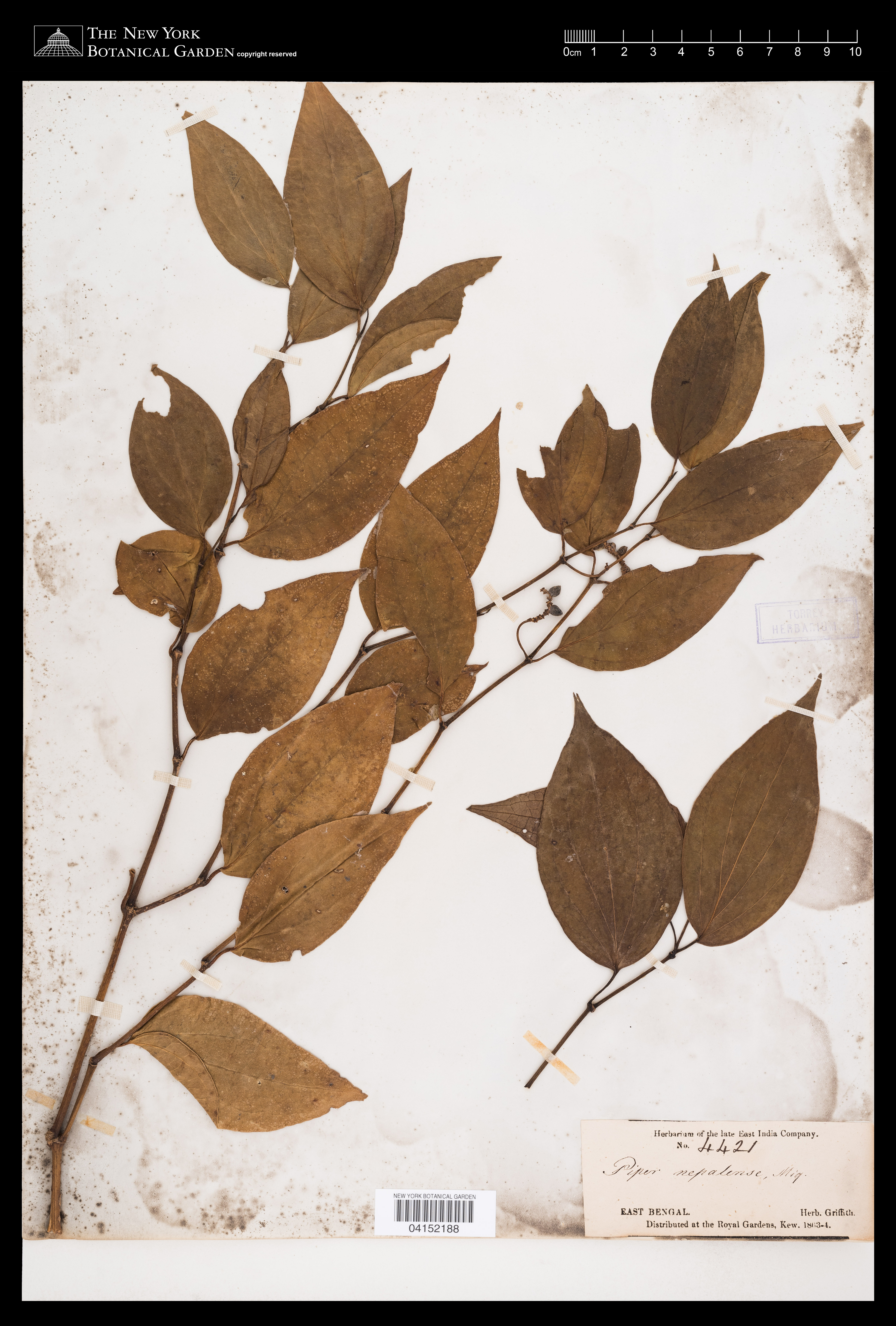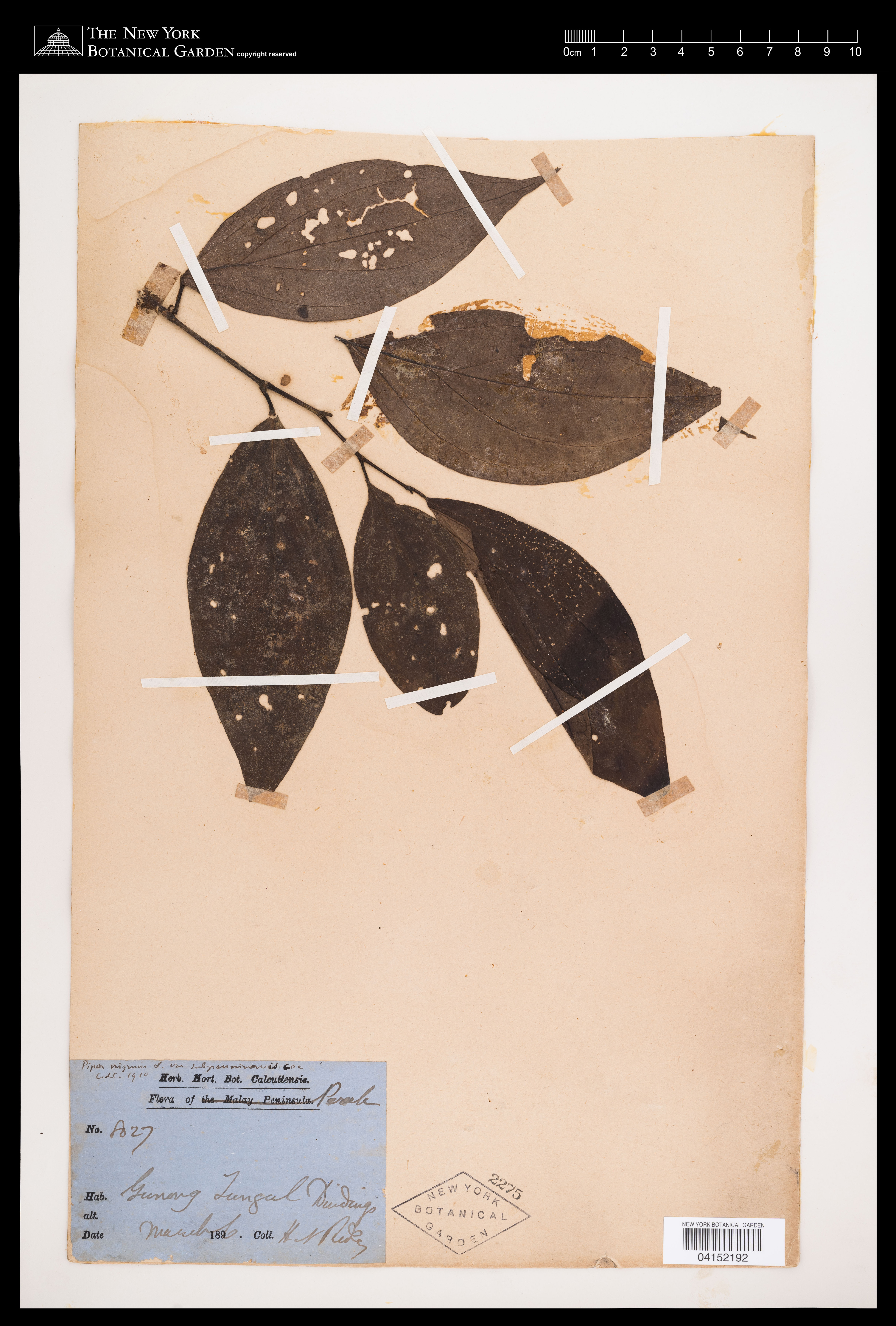By Amy Sahud
Feb 18 2023
It’s hard to imagine entering a diner, sitting down on the shiny vinyl seats of a booth, and not seeing those two little shakers sitting on that table in front to you: salt and pepper. Salt, a mineral, is a foundational element to cooking and dining throughout the world. But why above all other spices, is salt’s most loyal companion pepper? Where does it come from, and how did it get into this little glass shaker on the diner table?
Pepper is the fruit of the plant Piper nigrum of the Piperaceae family. The genus name Piper, coined by Carl Linnaeus, was likely borrowed from the Greek name for black pepper, Peperi (Shaffer, 2013). This plant is a flowering vine, with stems that can grow up to 30 feet. Its small, round fruit are a deep red when ripe. Native to southwestern India, the pepper plant grows in hot and humid climates.
To make the black pepper we all know and love, the green, unripe fruit is harvested, cooked in hot water, and dried. Changes in this method of preparation affect the taste of the spice, and can produce what we know as white and green pepper. To make green pepper, unripe fruits are dried without cooking them first. To make white pepper, the fruit is harvested when red and ripe, and the pericarp (the outer, fleshy layer) is removed, so that only the inner seed remains. The flavor of black pepper comes from the chemical piperine, which gives it a pungent flavor. This is different from other spice-inducing chemicals, like capsaicin, which gives chili peppers their kick.
Pepper, often crowned the “king of spices”, has been present in some of the oldest records of human civilization—it can be read in Eber’s Papyrus from 1550 BCE as an ingredient for embalming practices in Egypt. Since ancient Babylonia, pepper has been valued and traded across the Indian ocean and Mediterranean sea. Panini, the famous Indian grammarian from the 4th century BCE, mentioned pepper as a way to flavor wine. Charaka, the editor of Charaka Samhitha, a famous text in Indian medicine from the 1st century BCE, mentioned black pepper among many other spices to be used as ingredients in medicines (Ravindran, 2000).
Though it was originally used both for cuisine and medicinally, as pepper became known through trading routes, it rose in popularity for its distinct and pungent flavor. In the 1400s, pepper was so valuable, it was used as currency—in China, government officials and soldiers were paid partially in pepper (Ravindran, 2000).
In the 15th century, Portugal joined in the pepper trade in Southern India, causing massive political upheaval and turmoil due to their attempts to colonize the Malabar coast (Shaffer, 2013). Following this, the Dutch and then the English joined in on the quest to control the pepper market and reap its profits through colonizing Southern and Southeastern Asia. Trading companies like the Dutch East India Company and the British East India Company were founded largely to meet and profit from the growing demand for pepper. These companies, along with their myriad of violent offenses (including forced labor from enslaved people, the selling and transport of those enslaved people, and colonizing large parts of Southern Asia), played a large role in founding botanical institutions in the effort to study economically valuable plants. The Acharya Jagadish Chandra Bose Indian Botanic Garden was founded by Colonel Robert Kyd, an army officer of the British East India Company. The British East India Company had its own collection of herbarium specimens at the Kew Royal Botanic Gardens. Today, we can find specimens new and old from both institutions here at NYBG.
Pepper has a rich and complicated history. It is amazing that black pepper has been cultivated by people in Southern India for so long, and that these methods of cultivation and use have been shared far and wide. The exploitation of people and land is a large part of that history, and it is the reason why we have so many resources today—from the pepper in our shakers to the specimens in our herbarium. As we learn from and enjoy these resources, may we also contend with what brought them here, sitting nicely on our diner tables next to the salt.








